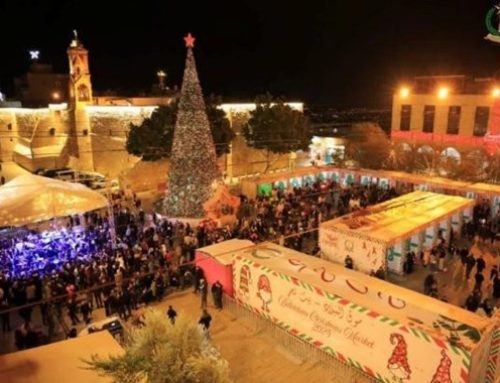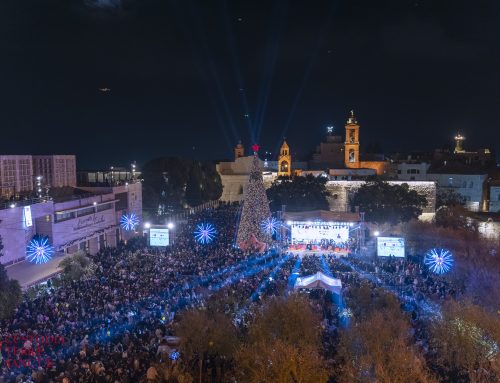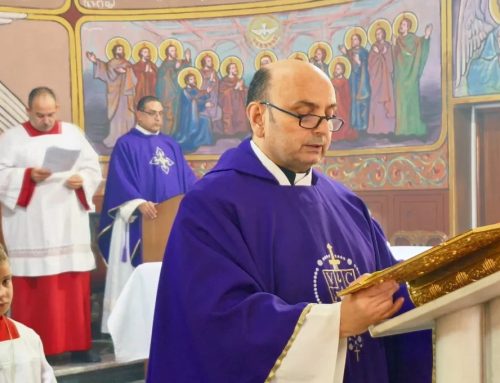Ladders leaning upon olive trees, nets and tarps cover the ground, buckets and rakes are the new ornaments in the garden for a few days as tourists and pilgrims walk by. Thousands of olives will be harvested by hand one olive at a time in this holy place ,where Jesus prayed in his hour of agony. “I like to think that Jesus also picked olives” said Father Diego, a Franciscan Friar in charge of the retreat hermitage at Gethsemane, as introduction to the day of harvest.
We pick the fruits of our trees, which are also the fruits of God’s creation.” For hours under the hot October sun, volunteers harvested the olives with care and joy and collected them in large bags. The Franciscans will extract oil from these olives and make the pits into rosaries. .
So the heart of the fruit of the olive trees planted in the garden where Christ shed tears of blood, will end up in the hands of Christians. With the rosaries, they pray with Mary the first of the sorrowful mysteries, “the agony of Christ” in Gethsemane on the Mount of Olives.
Olives and anger
According to the Oxfam organization, about 9.5 million olive trees grow in the West Bank. The olive growers employ 100,000 workers and reported that on good harvest years olives contribute up to $100 million (70 million euros) to the Palestinian economy. This the challenge of the harvest. But for several years the harvest season is a time of increased tensions between 350,000 Israeli settlers in the West Bank and Palestinian farmers. Last week, the Palestinian government in Ramallah denounced a series of attacks by settlers on the trees. In a few days, 70 olive trees were uprooted from Qaryout in the northern West Bank, more than 100 others in Al Moughayer (village north of Ramallah), and a substantial number were burned in other villages. The stories are recurring and incidents increasing. According to a report by the European Union in 2011, 10,000 olive trees were destroyed by extremist settlers, a cost estimated at 138 million dollars (103 million euros) annually to the Palestinian economy.
Amelie de La Hougue







